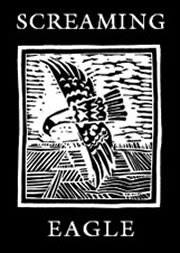
I’ve a lot to report back on from my Alsace trip last week but I wanted first to address an issue which dominated the week and the discussion that ensued on
Twitter and on fellow wine writer Jamie Goode’s blog
here. Which is why Alsace producers don’t make drier wines. It doesn’t of course apply solely to natural wines though many of the producers we visited were biodynamic.
The issue many believe is at the heart of the mystery why Alsace wines don't have a wider fan base. Those who have already grown to like them, love them, of course but they don’t appeal as much to younger drinkers. The conventional wisdom is that they’re easily confused with German wines and that’s affected by the bottle shape. It may be a factor but I think it’s much more to do with the confusing number of bottlings and the fact no-one knows exactly how sweet they’re going to be.
Alsace of course has a specific microclimate that results in it being much hotter and drier than you’d guess from its geographical position. But a characteristic of the climate, if I’ve understood it correctly, is that many of the vineyards gather mist (and therefore moisture) in the mornings which is then heated up on the grape skins by the hot sun. Botrytis can take hold very fast, particularly with pinot gris and gewurztraminer.
Producers can make drier wines by picking earlier, depending on the year, but that can reduce the aromatic quality of the wines or by fermenting out the sugar which may result in wines that have unacceptable levels of alcohol. And many choose not to because they like to make their wines in a richer style, Zind Humbrecht, Marcel Deiss and Rolly Gassmann among them (though Zind Humbrecht is moving to a drier style of winemaking)
Sweetness is also not so much a problem in the region because people expect it and there’s a culture of ageing wines - particularly grand crus - for a considerable number of years by which time the sensation of sweetness is considerably diminished.
It’s also a feature which Alsace’s neighbours in Belgium and Germany, which provide many of the tourists who visit the region, positively enjoy about the wines. In the growing Far East market too, sweetness is not a problem particularly with hotter Asian cuisines and dishes. “It just seems to be a problem for you in the UK” as one winemaker told me, mildly resentfully.
The propensity to sweetness also explains why even biodynamic producers haven’t given up on sulphur. the use of which is still widespread in Alsace. And why most winemakers still filter their wines. But more of this in due course.
Readmore »»















































